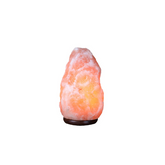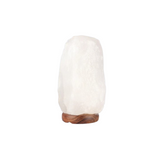Grinding Himalayan Salt at Home: Tools and Tips
Grinding Himalayan Salt at Home: Tools and Tips
Grinding Himalayan salt at home is a simple way to enjoy fresher flavor and preserve the valuable trace minerals that make this pink crystal so unique. If you’d like to explore its origins, mineral profile, and culinary uses in depth, check out our Complete Guide to Himalayan Pink Salt
Why Grind Himalayan Salt?
Freshly ground Himalayan salt delivers:
- Enhanced flavor – The edges of newly crushed crystals release subtle mineral notes.
- Improved control – You can customize grain size for different dishes.
- Preserved minerals – Grinding as needed helps retain trace elements like iron, magnesium, and potassium.
Tip: Keep salt away from moisture to prevent clumping and to maintain purity.
Choosing the Right Salt for Grinding
Not all Himalayan salt crystals behave the same in a grinder:
| Salt Type | Best Use | Notes |
|---|---|---|
| Coarse Himalayan salt | Table seasoning, finishing dishes | Large, dry crystals work best in manual or electric mills. |
| Fine Himalayan salt | Baking, sauces, dressings | Pre-ground or sifted crystals dissolve quickly; no grinding required. |
For grinding, opt for coarse salt with a dry, rock-like texture.
Tools for Grinding Himalayan Salt
Manual Salt Mills
Manual mills are affordable, durable, and give you tactile control.
- Ceramic burr grinders: Rust-resistant and ideal for salt’s corrosive nature.
- Stainless-steel mills: Stylish, but ensure the mechanism is salt-safe.
Maintenance: Wipe mills with a dry cloth; avoid washing with water.
Electric Salt Grinders
Electric mills offer convenience and consistent results:
- Battery-powered grinders: Perfect for quick seasoning while cooking.
- Adjustable grind settings: Switch from fine to coarse with a twist or dial.
Look for models with LED lights or refill windows for easier use.
Mortar and Pestle
For small batches or rustic recipes, a mortar and pestle lets you crush Himalayan salt to any texture. It’s also great for blending salt with herbs or spices.
Step-by-Step: How to Grind Himalayan Salt
- Select your tool (manual, electric, or mortar).
- Add coarse crystals – Leave enough space for the grinder’s mechanism.
- Adjust settings – Choose fine for baking, medium for everyday cooking, or coarse for finishing dishes.
- Grind just before serving to keep minerals and flavor intact.
Pro tip: Use a different grinder for pepper to avoid flavor crossover.
Storing Himalayan Salt After Grinding
Proper storage preserves freshness and prevents clumping.
- Keep ground salt in an airtight container.
- Store in a cool, dry place away from stovetop steam.
- For bulk crystals, use sealed glass jars until ready to refill your grinder.
For detailed guidance on keeping pink salt dry and safe, see our Himalayan Salt Storage Tips.
Common Mistakes to Avoid
- Grinding damp salt – Moisture can clog mills or damage electric grinders.
- Overfilling the grinder – Leave room for the burrs to rotate freely.
- Using metal mechanisms not designed for salt – This can lead to corrosion.
Health and Culinary Benefits of Freshly Ground Salt
Freshly ground Himalayan salt doesn’t just look beautiful on your table; it can:
- Enhance hydration when used in moderation in cooking.
- Support flavor without relying on excessive sodium.
- Pair perfectly with grilled meats, roasted vegetables, or artisan breads.
For sodium guidelines, refer to the FDA’s “Sodium in Your Diet”.
Final Thoughts
Grinding Himalayan salt at home is a quick upgrade for your kitchen. With the right mill or mortar, you can enjoy vibrant flavor and control over texture while preserving valuable minerals. Choose quality tools, store your salt properly, and savor each crystal fresh.





